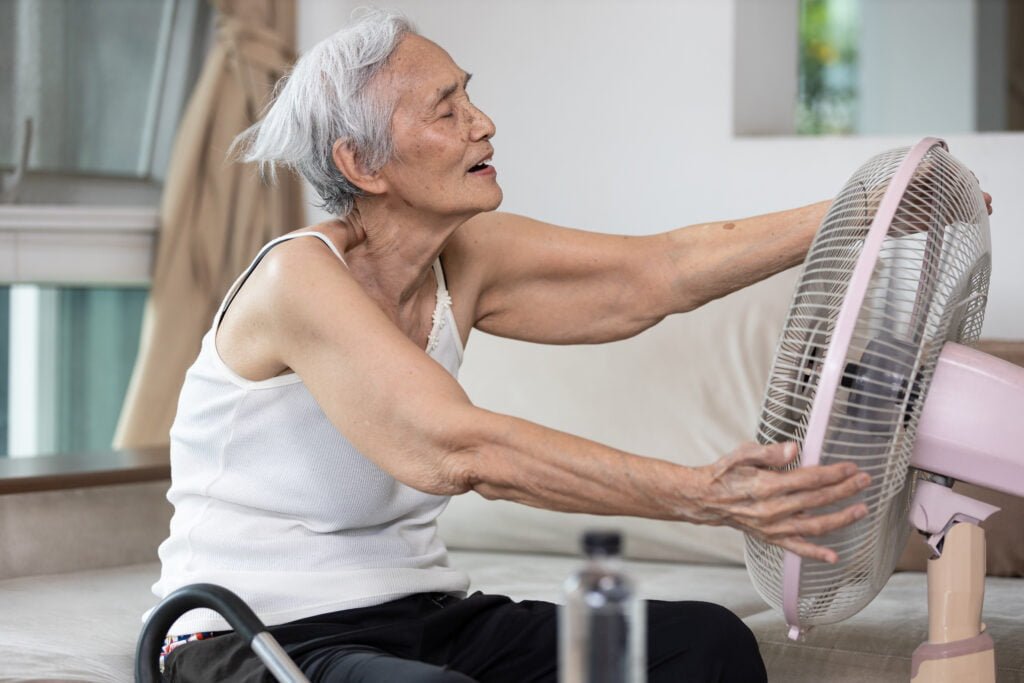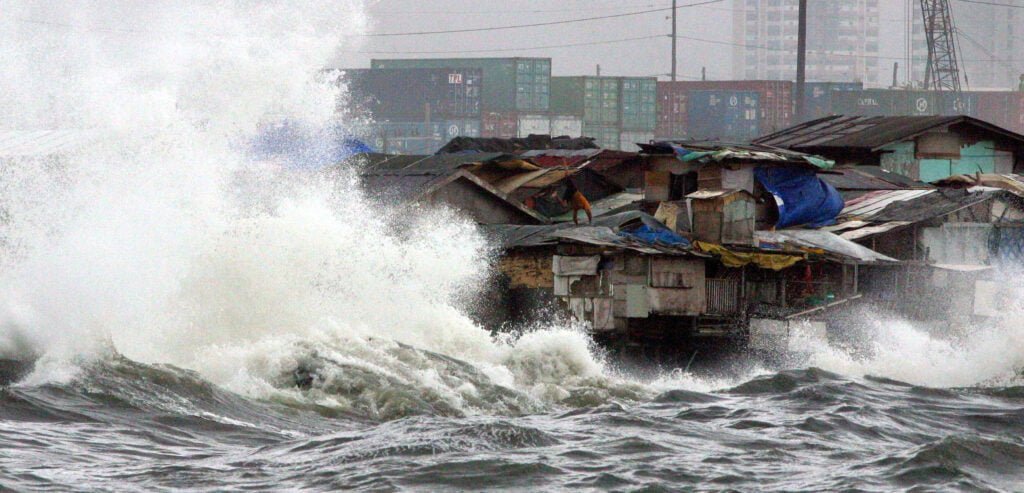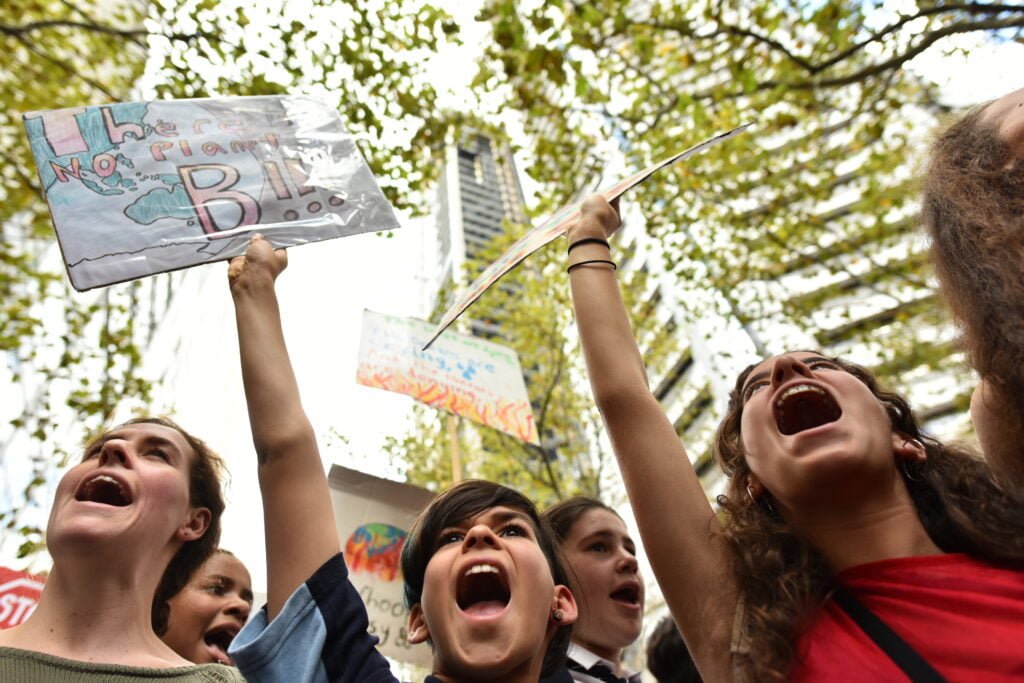COP27 might be criticised by some as a lot of hot air, but when it comes to coping with hot weather, that might be a good thing.
 Fans can make people feel as much as 4 degrees cooler : Satjawat (Adobe) Adobe standard
Fans can make people feel as much as 4 degrees cooler : Satjawat (Adobe) Adobe standard
COP27 might be criticised by some as a lot of hot air, but when it comes to coping with hot weather, that might be a good thing.
There’s a hum reverberating through the vast halls of Sharm El-Sheikh International Conference Center in Egypt. It’s not the sound of 90 or so heads of state negotiating the latest international agreements on climate change. Nor is it the 30,000 or so delegates, strategically influencing their way to a better deal. Beneath those sounds, very quietly, is the drone of the air conditioning units keeping the attendees at a comfortable temperature.
Egypt’s electricity is mostly generated by oil and gas. Running air-conditioners causes tonnes of carbon dioxide to belch into the atmosphere, aggravating global heating and creating a vicious cycle by increasing demand for air-conditioning.
Although Egypt is aiming for 42 percent renewable energy by 2035, globally, greenhouse gas emissions from global air-conditioning are set to soar over the coming decades. Climate change and rising household incomes will create the desire and the opportunity for more air-conditioner use. Reducing dependence on air-conditioners to cope with hot weather will require a radical change of mindset – using fundamental principles of human physiology and thermodynamics.
Across the developed world, cooling people is entrenched in the notion that the air that surrounds a hot person must be cooled and kept still. To maintain comfort, the typical air temperature target is between 20 to 23˚C. This ensures the temperature difference between the skin and the surrounding air is sufficient to transfer heat from the body without breaking a sweat.
But heat transfer can also be strongly influenced by the speed at which air passes across the body. Moving warmer air faster can produce the same level of cooling – and thermal comfort – as still, but cooler air. In experiments, people with fans on them have judged air temperature to be 3 to 4˚C cooler than it was.
Fans require less than 5 percent of the electricity required by air-conditioners. If air is moved using fans, the thermostat of air-conditioning units in buildings can be set at a higher temperature without sacrificing the thermal comfort of the occupants. This simple technique means air-conditioners can be used for shorter durations, turning on later and turning off earlier in the day. On some days, fan-use alone may be sufficient to maintain thermal comfort and air-conditioners may not be needed at all. Current cooling practices might have them running for hours.
In a first investigation of its kind, an Australian case study found that ‘fan-first’ cooling could reduce annual electricity demand from air-conditioning by more than 70 percent. The cost of implementing fan-first cooling relative to the volume of greenhouse gas emissions would yield a net benefit better than the government-supported switch from incandescent to LED home lighting.
Fan-first cooling is also relevant to people trying to keep cool during summer in countries facing energy insecurity due to recent geopolitical events. During the 2022 summer, governments in Italy, Greece, and Spain all mandated minimum thermostat set-point temperatures of around 27˚C to conserve energy and reduce reliance on Russian gas. Combined with greater air-flow the equivalent to a typical pedestal fan on medium, this temperature is still within a comfortable thermal range.
Electric fans offer an affordable and accessible cooling solution for the most vulnerable during extreme heat events, who typically cannot afford air-conditioning. Using more fans and fewer air-conditioners during heatwaves could also help reduce stress on overwhelmed power grids and lower the risk of wide-scale power outages.
Yet, the effectiveness of fans in extreme heat conditions has been contentious. Major public health agencies including the World Health Organization, the US Centers for Disease Control and the UK National Health Service, currently advise that fans should not be used above 35˚C because they can supposedly “speed the onset” of heat exhaustion. This notion probably arises from the understanding that, when hot, human skin temperature stabilises at around 35˚C. So, when air temperatures rise above this level fans may force more heat into the body. This is the same science behind fan-forced ovens.
However, unlike a roasting turkey, humans sweat. Fans greatly enhance the evaporation of sweat, producing a cooling effect. Body heating will only be accelerated when extra dry heat gain from the fan exceeds extra cooling from sweat evaporation. There is no evidence that the ‘tipping point’ for this is 35˚C.
Human physiologists conducting studies in climate chambers that replicate heatwave conditions have observed the protective effect of fans up to 42˚C in young healthy adults. There is a definite limit, beyond which fans can worsen heat stress, especially when humidity is low and most sweat freely evaporates even in still air. In very hot (47˚C) and dry (less than 15 percent relative humidity) conditions, fans worsen physiological heat strain, with body temperatures rising faster, dehydration accelerated, and the cardiovascular system needing to do more work to prevent blood pressure dropping rapidly.
As people age beyond 65 years, their ability to sweat declines. Since the benefits of fans depend on sweating, the temperatures at which fans are effective become lower with age. The actual temperature at which fans should be turned off because they are harmful depends on humidity. But recent work proposes a simplified fan-use temperature guide irrespective of humidity to enable effective public health messaging: 39˚C for young adults, 38˚C for older adults, and 37˚C for people on specific kinds of medication (anticholinergics).
Twelve countries have the greatest potential for increased use of air-conditioners, based on increasing temperatures and income: India, China, Indonesia, Nigeria, Pakistan, Bangladesh, Brazil, Philippines, the USA, Vietnam, Thailand, and Mexico, with a combined population of 4.5 billion. If these countries used these temperatures as a guide for recommending fans, on more than 19 of every 20 hot weather days since 2007 they could have recommended fans first and air-conditioners second.
The benefits of moving air more and chilling it less are clear. While many on-lookers may be wary of empty promises at COP27 in Sharm El-Sheikh, blowing a lot of hot air may not be such a bad thing after all.
Ollie Jay is a professor in the Faculty of Medicine and Health, and director of the Heat and Health Research Incubator at the University of Sydney.
Arunima Malik is a senior lecturer in the Integrated Sustainability Analysis group at the School of Physics and in the Discipline of Accounting, Business School at the University of Sydney.
Tony Capon is a professor in the Faculty of Medicine, Nursing and Health Sciences, and director of the Sustainable Development Institute at Monash University.
The authors declare no conflict of interest.
Originally published under Creative Commons by 360info™.
Editors Note: In the story “COP 27” sent at: 31/10/2022 09:51.
This is a corrected repeat.














